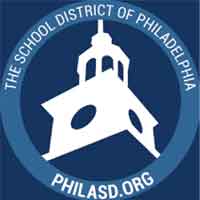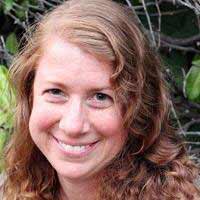Counseling for Learning Differences – Expert Interview & Advocacy Guide
Counseling Schools Search
When you click on a sponsoring school or program advertised on our site, or fill out a form to request information from a sponsoring school, we may earn a commission. View our advertising disclosure for more details.
“If they’re in school and they struggle with learning, then you need to love them all the more.”
Loretta Solomon, retired reading specialist
One in five children has a learning difference in the United States. However, according to a report published by the National Center for Learning Disabilities in 2017, just one in 16 public school students has an individualized education program (IEP) and only one in 50 students receives accommodations at school through civil rights statute Section 504.
What’s the difference between a learning difference and a learning disability?
“Learning disability is a legal term,” said veteran reading specialist Loretta Solomon. It refers to widely known disorders like dyslexia and lesser known ones like oral/written language disorder and specific reading comprehension deficits.
But this distinction does not take into account all of the factors that can make learning difficult, which include learning and attention issues, some of which are categorized as disabilities, some as medical conditions, and some as neither. “I way prefer learning differences,” Ms. Solomon added.
A learning difference can include specific learning disabilities and attention disorders, as well as differences in executive functioning in areas of the brain that control task initiation and working memory, for example. A medical condition can be designated as a disability and thus qualify students for accommodations under the Americans with Disabilities Act Section 504 if the condition impacts a major life activity (such as learning) in the absence of treatment.
In honor of Learning Disabilities, Dyslexia, and Attention Deficit Hyperactivity Disorder Awareness Month this October, we spoke with Loretta Solomon about meeting the needs of students who learn differently in school.
Meet the Expert: Loretta Solomon, MEd

Loretta Solomon is a retired reading teacher whose career as an educator spanned more than forty years in both public and private school settings.
During her tenure with the School District of Philadelphia, Ms. Solomon assessed students’ reading skills, designed programs and educational plans for students who struggled with reading and writing, and worked with small groups of students on their literacy goals. She also modeled literacy lessons for teachers in their classrooms: coaching, giving feedback, and working with entire classes.
A certified reading specialist with master’s degrees from Temple and the University of Pennsylvania, Ms. Solomon provided teacher professional development in reading and writing instruction and the common core standards through partnerships with the University of Pennsylvania and the Philadelphia Writing Project. She was also the owner of a children’s bookstore from 1976-1979.
Factors that Affect Learning
Early on in Loretta Solomon’s career, she observed that “there were huge differences in how kids learn how to read.” And it was to this that she dedicated her work with both students and teachers over the course of her career. “It was the acquisition of literacy that interested me,” she said. Some of the factors that affected her students’ learning include the following.
Culture
There are a lot of reasons for the differences in how people acquire literacy, ones that became even more apparent when Ms. Solomon, a Canadian from Montreal, took a job with the School District of Philadelphia in 2003, after over 20 years of service in private schools. However, she was up for the challenge. Having emigrated to the United States from Canada in the 60s, teaching in public schools was a long-held dream.
“I was working in West Philly where the big thing that stood out was that there was a huge cultural difference between me and my students.” She shared that her students said she “talked funny,” and Ms. Solomon negotiated this by telling them they were going to need to “translate” for her so that they could understand one another, which the students loved.
Materials
The kinds of texts and reading material used in instruction have a significant impact on student learning. In fact, Ms. Solomon saw a strong correlation between reading material and reading skill development. It’s important that materials be at the right level as well as interesting to students, she related. The perception students have of the kinds of texts they’re reading matters, too, so explaining that picture books are not “for babies,” finding books that reflect students’ cultures, and helping students set a purpose for their reading all reflect best practices in literacy instruction.
Having taught herself to read from Sally, Dick, and Jane books, Ms. Solomon was excited to teach using the plethora of wonderful picture books that were being published at the start of her teaching career: “It was the time when children’s picture books were flourishing. It was Ezra Jack Keats and Maurice Sendak, and many, many others. Their books also represented more of a diversity than only mainstream kids and I said, ‘Oh, why can’t I use these to teach?’”
This is, in fact, where Ms. Solomon found herself focusing when not working with students one-on-one in later years, the teaching of reading through culturally relevant materials: “With slightly larger groups, I had kids reading real, very short books…and they had African American characters, and they would become extremely interested and were able to comprehend. Even if they had some difficulty decoding, they had awesome, often excellent comprehension skills.”
Methodology & Environment
For some students, teaching methods or the learning environment can pose challenges to learning. Ms. Solomon observed that some students struggled due to a lack of phonics instruction. “They hadn’t studied any phonics because that wasn’t en vogue. You know, it comes and goes.”
But in her opinion, all of the different strategies are necessary. “You never know in a class of 40 kids in the lower grades…how they’re going to learn. But the kids that I saw were lacking in phonics and a safe place to learn, safe enough so that they would feel comfortable.”
Learning Differences
All of the areas mentioned above influence a student’s ability to learn. However, they are not the cause of the learning differences that affect one in five school children.
How do learning differences, specifically those related to learning and attention, differ from other factors that influence learning?
Learning and attention issues can pose difficulties in the acquisition of academic skills like reading, writing, and math. They can also pose challenges in other areas related to learning like listening and comprehension, organization and focus, and even social and motor skills related to speech and movement.
ADHD is a medical condition that can make learning difficult due to impulsivity, hyperactivity, and shorter attention spans. However, 30 to 50 percent of individuals with ADHD also have a second learning difference, and the combination can make learning especially challenging.
Contrary to some beliefs, learning and attention issues do not have a correlation to intelligence.
Support for Students Who Struggle with Learning: Interventions & Strategies
Not all learning differences are easy to identify and oftentimes, the outward signs are mistaken for laziness or lack of effort. One of these signs is avoidance or demonstrating a lack of interest in reading and other learning activities.
Ms. Solomon shared that she noticed that students with difficulty learning would avoid reading on their own. “If they weren’t interested, it was because they were reluctant. They just wanted to be read to. They liked the books. They loved choosing books.” But despite an interest in books, such students were not interested in—and avoided—reading independently on their own.
Left unaddressed, students develop coping strategies to mask their difficulty with reading and, in some cases, can get by for years. “They were really good at hiding it,” Ms. Solomon said of students that had made it to fourth grade but who could not actually read on their own.
What interventions can be used to support students who struggle with literacy and learning?
Over the course of her forty years in education, here’s what Ms. Solomon found helpful to student acquisition of literacy:
One-on-One Teaching
Working one-on-one with students on their specific learning goals had a strong impact on Ms. Solomon’s students and allowed for the use of a variety of teaching methods, such as multisensory approaches to literacy development.
Partnerships with Universities
The University of Pennsylvania partnered with the West Philly school where Ms. Solomon worked, making experts in math and literacy available to the teachers. “That changed everything,” she said. “The reading specialists were asked to help work with the teachers as well as working with children.”
She describe the task as “huge,” sharing that despite the teachers’ good intentions, they had no understanding of the difficulties students were having in learning nor how to address them through instruction. But the professional development provided through the collaboration with Penn brought about a shift in mindset and specific training in the use of differentiated instruction.
Specialized Training & Support
At the time of this partnership with Penn, Ms. Solomon was just finishing her second master’s degree and certification as a reading specialist: “I learned all the latest theory…on all the latest kinds of teaching literacy…what was needed… and the emphasis was on urban education.”
Her advice to teachers is to remember that learning to read and write is a social activity that can be collaborative. To make the metacognitive visible and audible for students, model reading and writing strategies. Narrate your actions so students see and hear the behaviors of proficient readers and writers.
And for individuals specifically seeking a school counseling role, Ms. Solomon had two pieces of advice:
- Understand what it’s like to learn differently.
- Make sure students are in a very safe place to learn.
Resources for Working with Struggling Learners
- Lessons That Change Writers (Middle School) by Nancy Atwell
- Mosaic of Thought by Ellin Oliver Keene and Susan Zimmerman
- Literature Circles: Voice and Choice in Book Clubs and Reading Groups by Harvey Daniels
- Guided Reading: Good First Teaching for All Children by Irene C Fountas and Gay Su Pinnell
- Cultivating Genius: An Equity Framework for Culturally and Historically Responsive Literacy by Gholdy Mohammad
- Wondrous Words: Writers and Writing in the Elementary Classroom by Katie Wood Ray

